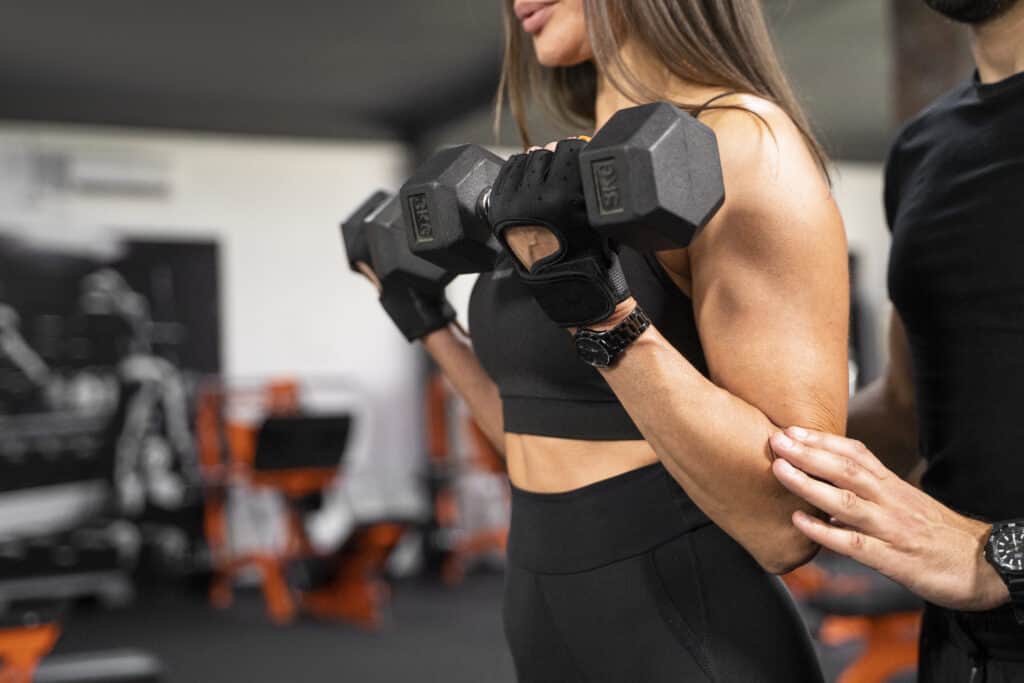This article is written for anyone who is new to strength training or trying to get back into it. An important component to understand is how to determine the starting weight for any new exercise. First, take a step back and work with your bodyweight initially before you lift any type of weight. Can you handle a push-up using good form for repetitions? If not, you’re probably not ready for a chest press exercise on a machine or free weights.
First, Learn to Handle Your Bodyweight
Work on developing strength by performing multi-joint movements using bodyweight prior to lifting any type of weight. Did you know you use about 65 percent of your bodyweight doing a push-up? If this is difficult how are you going to manage a bench press exercise? Once you have mastered this and other bodyweight exercises like a squat, lunge, or chin-up, etc. you’re ready to progress to strength training.
Next, Progress from Light to Heavy Resistance
This may sound basic, but many people start off lifting more weight than they can handle. When transitioning from bodyweight to machine or free weight exercises, always begin with a lighter resistance. First, try to complete 12 repetitions or more of an exercise. If unable, decrease the weight by 5 percent for upper body and 10 percent for lower body exercises. Conversely, if you’re able to do more than 15 repetitions of a particular exercise, increase the weight to the next plate with machine exercises for the next set. For free weights, increase the load by 2.5 to 5 pounds for upper body exercises. Use 5-10 pounds for lower body exercises. This is just a guideline for you to use. The goal is to find the best weight that allows you to complete about 8-12 repetitions for an exercise. This may take a few sets going back-n-forth before determining where you actually need to be. Keep in mind it’s not an exact science.
After you begin feeling more comfortable on the equipment, you may want to challenge yourself more. This is where 1-RM testing can be helpful.
1-RM Testing for Strength Training
This type of testing refers to the most weight someone can lift (using good form) for one repetition. You need to make sure you’re warmed-up prior to performing any type of testing. Next, roll out using a foam roller for a few minutes. Then perform a warm-up set using light weight for 10-12 repetitions. The weight then continues to increase as the number of repetitions decrease with each subsequent set. Take a few minutes to recover between sets. It’s different for everyone, but this may take about 5-6 sets until you feel ready for the final 1-RM set. The Jefit app can help you plan and track this process.
When in doubt, always weigh on the side of caution when starting out or if coming back from a long layoff or injury. Having a better understanding of where to begin in terms of a starting weight will hopefully help take out some of the guess work for you.
Stay Strong Together
Jefit, named best strength training app by Sports Illustrated, Esquire, GQ, Men’s Health, Greatest, Forbes Health, and many others. We offer a community responsible for 92,000,000 workouts to date! The app, which recently passed 10 million downloads, comes equipped with a customizable workout planner and training log. The app also has ability to track data, offer audio coaching cues, and can share workouts with friends. Visit our members-only Facebook group. Connect with like-minded people, share tips, and advice to help get closer to reaching your fitness goals.
Read the scientific paper published in the Journal of Medical Internet Research using the Jefit app. Also, a great Jefit app review was recently published by MUO that can be found here.
- Top Hip & Back Extension Exercises for Posterior Chain Power - April 23, 2025
- Best Exercises to Build Strong & Defined Shoulder Muscles - April 21, 2025
- Whey vs. Casein: What’s the Best Protein for Building Muscle - April 18, 2025
